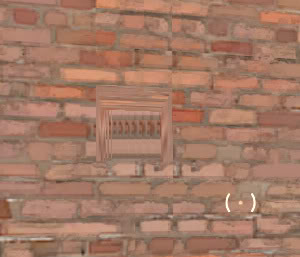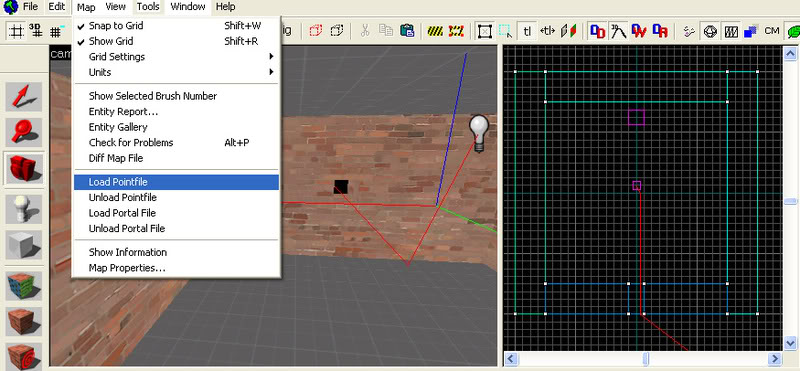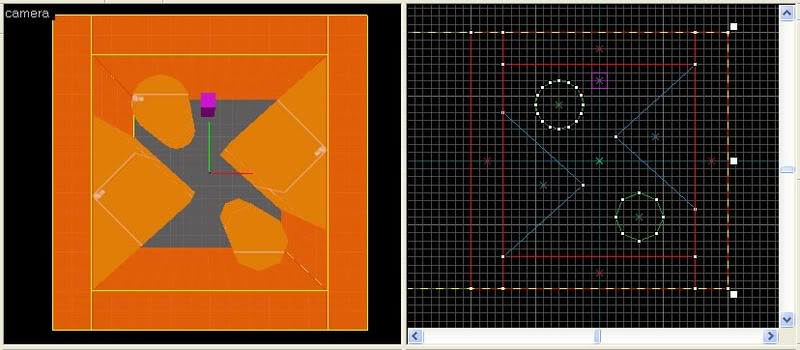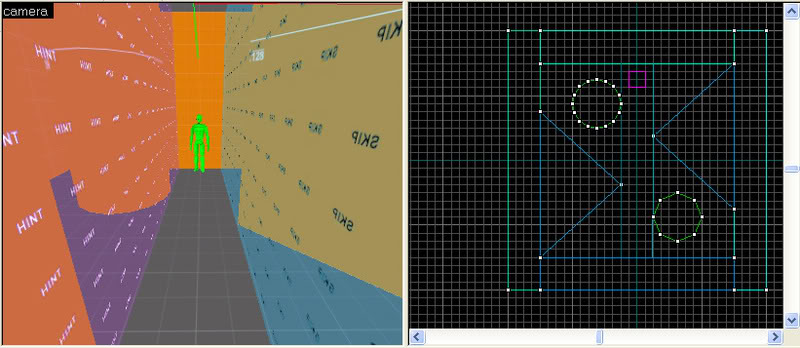- Oct 25, 2007
- 219
- 690
Part 1-- **** leaked ****
Leaks are bad. In fact, they are one of the worst things that can happen to a good map. However, the good news is that 99% of the time, they are easily fixed!
What are leaks and how do leaks happen?
Good question. For a TF2 (or HL2 or CS:S) map to work properly, it needs to be sealed. Think of the map as being airtight, and there's a vaccuum of space outside the walls of your map. If there's a leak, all the good stuff will be sucked out into outer space. This is bad.

Here is what a leak looks like in the game. You can tell because of all the distorted textures around it.
Leaks usually happen when you have a small hole that fails to seal the map, or an entity that's been misplaced outside of the map. Other things can also cause leaks, like bad brushes, or trying to seal a map using entities and wrong textures.
I don't see a leak, how do I know I have one?
Check the log when you compiles the map (using the run map command). Here is an example of what to look for:
I've got a leak! What do I do?
Fortunately, Hammer has a few tools to help out. First the loadpoint tool, located in the map menu. The loadpoint will create a path from one entity to your leak. Just follow the red line.

In this case, my hole is pretty big and obvious. Sometimes a leak can be very, very small.
Another tool is the check for problems option under the map menu. It will tell you if you have any bad brushes.
Can I still play my map with a leak?
Technically, yes. However a lot of entities don't work (like water and lights). Also there was no VIS optimization (which we'll speak about shortly), so that map will be performming poorly. You may also get a lot of visual glitches from outer space.
Should I construct a large, hollow box around my map to seal it?
It's an option, but not a very good option. This is because the game still needs to not only render this giant box, but also any outside textures that you normally won't see(the game automatically ignores any textures that face outside of the map). Both your compiling time and playing performance will be detrimentally affected by this big box. This should be a tool of last resort.
Leaks are bad. In fact, they are one of the worst things that can happen to a good map. However, the good news is that 99% of the time, they are easily fixed!
What are leaks and how do leaks happen?
Good question. For a TF2 (or HL2 or CS:S) map to work properly, it needs to be sealed. Think of the map as being airtight, and there's a vaccuum of space outside the walls of your map. If there's a leak, all the good stuff will be sucked out into outer space. This is bad.

Here is what a leak looks like in the game. You can tell because of all the distorted textures around it.
Leaks usually happen when you have a small hole that fails to seal the map, or an entity that's been misplaced outside of the map. Other things can also cause leaks, like bad brushes, or trying to seal a map using entities and wrong textures.
I don't see a leak, how do I know I have one?
Check the log when you compiles the map (using the run map command). Here is an example of what to look for:
materialPath: z:\program files\steam\steamapps\xxxx\team fortress 2\tf\materials
Loading Z:\dox\maps\testmaps\visleaf.vmf
fixing up env_cubemap materials on brush sides...
0...1...2...3...4...5...6...7...8...9...10**** leaked ****
Entity light (0.00 16.00 32.00) leaked!
I've got a leak! What do I do?
Fortunately, Hammer has a few tools to help out. First the loadpoint tool, located in the map menu. The loadpoint will create a path from one entity to your leak. Just follow the red line.

In this case, my hole is pretty big and obvious. Sometimes a leak can be very, very small.
Another tool is the check for problems option under the map menu. It will tell you if you have any bad brushes.
Can I still play my map with a leak?
Technically, yes. However a lot of entities don't work (like water and lights). Also there was no VIS optimization (which we'll speak about shortly), so that map will be performming poorly. You may also get a lot of visual glitches from outer space.
Should I construct a large, hollow box around my map to seal it?
It's an option, but not a very good option. This is because the game still needs to not only render this giant box, but also any outside textures that you normally won't see(the game automatically ignores any textures that face outside of the map). Both your compiling time and playing performance will be detrimentally affected by this big box. This should be a tool of last resort.
Last edited:






